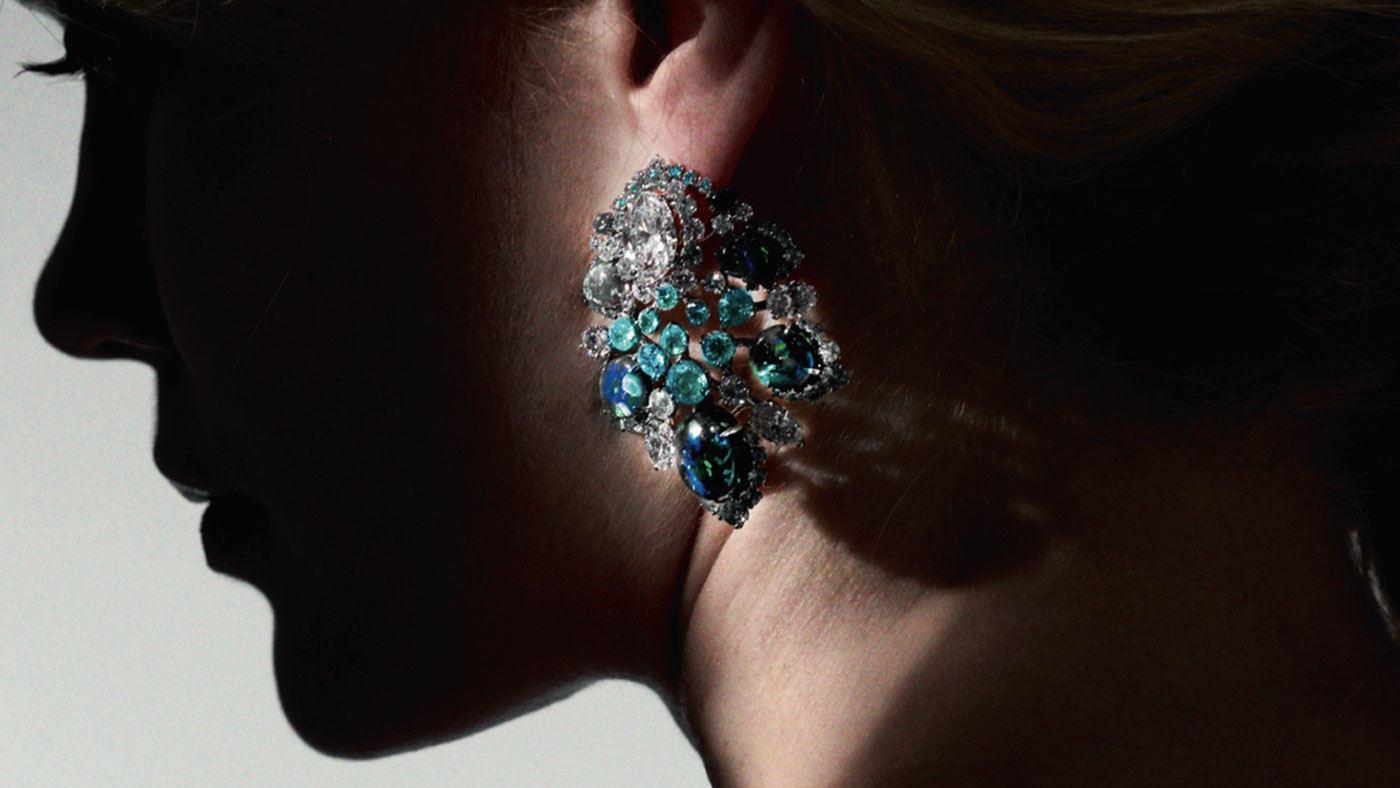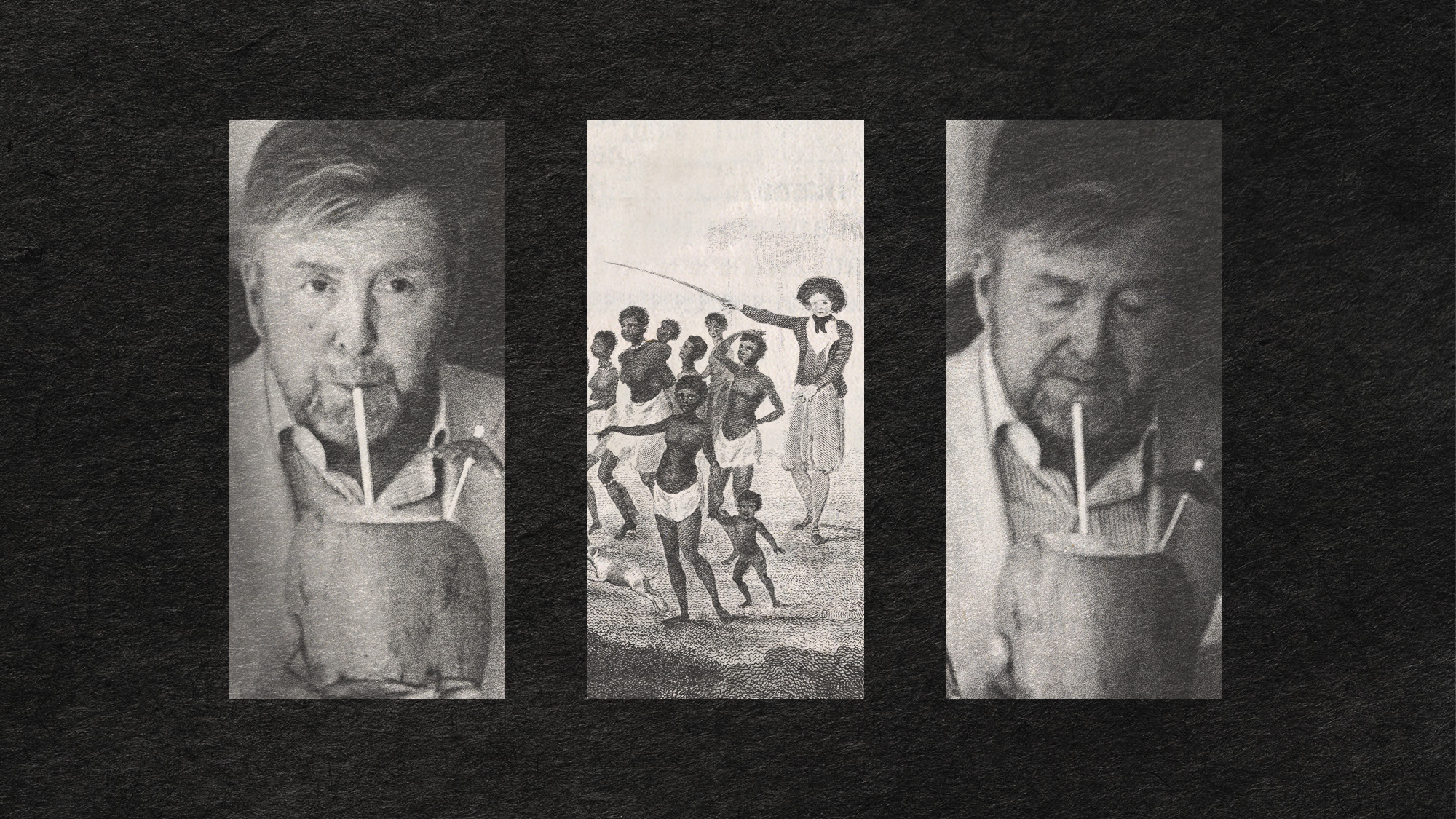Jeremy Morris: the London jeweller on romancing the stone

Jeremy Morris may design exquisite jewellery, but he won’t spin you a yarn. He’s a no-nonsense kind of guy when it comes to expressing his likes and dislikes. “What do you think about costume jewellery?” I ask when I catch Morris clocking my diamanté brooch as we shake hands at his flagship Bond Street boutique. “I don’t,” he replies, deadpan, adding a devilish laugh.
Morris is unapologetically blunt about “fun but throwaway” jewellery, but when you get him started on gemstones, you can see why anything less than the real deal leaves him cold. The designer, who took over as managing director and principle designer of his father David’s eponymous brand in 2003, isn’t one for rapturous monologues on the art of fine jewellery either. Instead, he describes his favourite gemstones – coloured sapphires, diamonds, rubies and emeralds – in a playful manner that points to a deeper, synaesthetic connection.
“We’re beginning to use padparadscha sapphires more,” he says as we touch upon the subject of coloured gemstones, a house specialty since the inception of the brand in 1962. Princess Eugenie’s engagement ring, an oval padparadscha sapphire surrounded by diamonds, has recently shone a spotlight on this rare, pink-coloured stone found mostly in Sri Lanka. “They’re amazing, so beautiful! You pick them up and they appear to vibrate. It’s kind of crazy, like whoosh,” Morris says, making a firework gesture with his hands.
The Week
Escape your echo chamber. Get the facts behind the news, plus analysis from multiple perspectives.

Sign up for The Week's Free Newsletters
From our morning news briefing to a weekly Good News Newsletter, get the best of The Week delivered directly to your inbox.
From our morning news briefing to a weekly Good News Newsletter, get the best of The Week delivered directly to your inbox.
“I’m not good with faces, but when it comes to stones, I remember them all,” he says of the pieces he has acquired through the years. “It’s singed in my memory, because the house has a very specific handwriting for the types of stones I buy. I don’t buy very thick white diamonds, for example; I tend to go for white diamonds with a good spread so that one carat looks like 1.25 carats. I try to add value wherever I can.”
It’s an eye he has inherited from his father: “Interestingly, my dad never signed anything. Somebody brought in a pair of [vintage] pink and yellow diamond earrings the other day, and I took one look and said, ‘Those were definitely made by us.’” The Morris style, it seems, is as much about statement design as it is about the nuances of each and every stone that makes the cut.
In the mid-’60s, his father’s eye-catching pieces, noted for their almost invisible settings, daring use of colour and pioneering gem cuts, were favoured by glamorous collectors including Princess Margaret and Elizabeth Taylor. Richard Burton famously gifted Liz a heart-shaped David Morris diamond necklace for Valentine’s Day in 1965. On the big screen, leading ladies have dazzled wearing David Morris designs in a string of James Bond movies. The house continues to attract many celebrity clients, whose names Jeremy is, understandably, reluctant to share.

David Morris has expanded greatly in the Middle East under his watch, with six stores in the region, including a new boutique at Porto Arabia on Doha’s Pearl island, Qatar’s premier address for luxury retailers. Another store in Riyadh is also in the pipeline. In Europe, the house has addresses in London, Paris and Moscow. Admittedly, says Jeremy, the past decade has brought challenges: “Internationally, there has been a slowdown: in Russia, because of sanctions; then the falling oil prices and the trouble in the Middle East, plus the anti- corruption laws in China. You have to be more patient. Before, it might have taken six months to a year to sell a significant piece, now, it may take four to six years. “What’s more, things now have to be more themed. Collections need to be worked on: you need to launch them, have the press behind them; they need to be Instagrammed and you need to put them on the right people. It is not as much fun as buying the fabulous stones, but you must adapt or you won’t get new clients through the door.”
A free daily email with the biggest news stories of the day – and the best features from TheWeek.com
Given that David Morris is family-owned, this stealthier approach to sales has in some ways been more of an advantage than an albatross, especially when it comes to statement jewellery. “The thing is not to rush something because you’ve bought it. Much better to take your time – although if I love a stone, I have to buy it. I once had a very important natural black pearl that must have been about two inches long and about an inch wide. Initially, I made a pendant out of it, but selling a pendant like that is not easy. Six years on, at an auction, I found a white pearl that matched it exactly. I had to have it, even though I ended up paying much more than I’d intended. With the two pieces, I made an incredible pair of earrings and they sold straight away.”
The sale of a significant stone can be as impactful as finding it in the first place. “Recently I sold a 16ct Ceylon ruby, which was an exceptional natural stone,” says Morris. “I know I won’t see another one like that for a while, so it was bittersweet to see it go out the door. Sometimes they come back, but this one won’t return, that’s for sure.”
-
 In Suriname, the spectre of Dutch slave trade lingers
In Suriname, the spectre of Dutch slave trade lingersUnder the Radar Dutch royal family visit, the first to the South American former colony in nearly 50 years, spotlights role of the Netherlands in transatlantic trade
-
 Political cartoons for December 7
Political cartoons for December 7Cartoons Sunday’s political cartoons include the Trump-tanic, AI Santa, and the search for a moderate Republican
-
 Trump’s poll collapse: can he stop the slide?
Trump’s poll collapse: can he stop the slide?Talking Point President who promised to ease cost-of-living has found that US economic woes can’t be solved ‘via executive fiat’